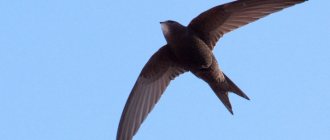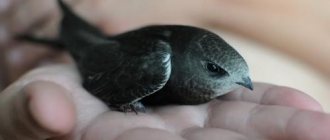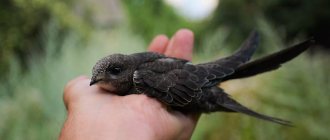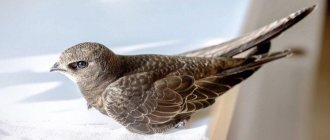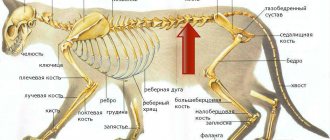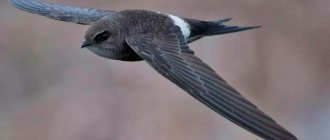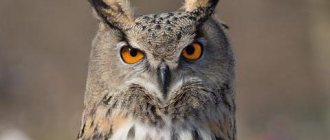These small beautiful birds are familiar to everyone. This refers to the swift and swallow, which we will talk about. They spend their life close to humans. With the arrival of spring, they fly to people's homes, giving joy and good mood.
Many have had the opportunity to observe birds soaring over residential areas and performing complex pirouettes. Since childhood, we were taught that swallows and swifts have a forked tail. Then what is the difference between swifts and swallows?
general information
At first glance, these two birds are very similar, but learning to distinguish them is quite possible. Ornithologists classified these representatives of the fauna into different orders.
- Swifts are representatives of the order Swift-shaped (the second name is long-winged).
- Swallows are classified as passeriformes.
How can one explain their external similarity? The main reason is a similar method of obtaining food. They feed on insects that they catch while flying. At the same time, their technique for moving in the air must be very good. This is facilitated by excellent aerodynamics, low weight and appropriate wing shape. The structure of the tail is ideal for performing complex maneuvers in flight. But not all people know how to distinguish a swift from a swallow.
Both species of birds have become professionals in their field. The maximum recorded flight speed of a swift is one hundred and sixty kilometers per hour. This rhythm of life does not prevent them from catching insects and water drops on the move, as well as sharing food with the chicks following their parents. Scientists have established a fact: swifts are able to sleep while in the air. Such interesting birds are swifts and swallows.
Interesting to know
Proximity to humans has given rise to many myths and statements regarding these birds. They are credited with weather prediction, unusual abilities and almost supernatural abilities. Most Popular:
- Swifts sleep in flight
. It is almost impossible to see a swift on the ground, which has given rise to the rumor that swifts supposedly sleep on the fly and never land. In fact, the flyer has nothing to do on the ground - his home is in hollows, under roofs and in the recesses of heights, and food flies in the air. In addition, long wings and short legs make it difficult to take off from a horizontal surface. Birds rest well in their nests at night. - Swallows call (or predict) rain
. The low flight of the flock actually precedes bad weather. But the swallows themselves have nothing to do with this - atmospheric pressure reduces the level of midge crowding, and the birds simply follow the food. - Destroying a swallow's nest means causing a fire
. It’s just a useful superstition that is designed to protect man’s feathered neighbors.
Another myth concerning both types of birds is that they cannot close their mouths. This rumor arose due to the fact that during a hunt, swallows and swifts open their beaks, grabbing insects in flight. But this happens only immediately before capture; at other times, they, like others, fly with their mouths closed.
Bird feathers
You can distinguish one bird from another by the color of its plumage. This is, of course, problematic to do during a flight. The plumage of swallows is blue-black. The breast is beige or snow-white. The head is covered with an imitation cap, which is light brown in color. There is also a collar to match the cap.
The plumage of swifts is distinguished by dark tones that have a greenish tint. They also have a small white spot on their neck and under their beak. Swifts tend to be larger in weight and size than swallows. Now you know the difference between swifts and swallows.
Representatives of both orders are migratory. Sometimes in early April you can meet the first swallows returning to their native land. But swifts fly only when summer is just around the corner and the warm weather has finally settled. This happens in the last days of May. A popular sign says: swifts have appeared - warm weather has settled for a long time. But how can one distinguish a swift from a swallow in order to interpret folk superstitions?
Appearance
The swallow is a small, agile bird, weighing 17-20 grams and a body length of no more than twenty centimeters. With such a small stature, the swallow has a wingspan of 31-45 centimeters. The color of the swallow is predominantly blue-black, with only a pale beige breast, and on the head, if you look closely, you can see a brownish “cap”. A special distinctive feature of this hardworking bird is its unusual tail, long and forked at the end. The color of the female's plumage is somewhat duller than that of the male, but in flight they are difficult to distinguish.
The dimensions of the swift are quite comparable to the dimensions of the swallow: the same length of the body, the same wingspan, but the weight of the young bird is twice the weight of the swallow. Swifts also differ in color. Despite the fact that the plumage is also dark, the tint in this case has a greenish tint, and there is a small white spot on the chin and throat. Birds of both sexes look exactly the same, but the shoots differ from adult swifts in that their feathers are not bright enough.
A distinctive feature of the swift is its sharp beak, with which they seem to cut the sky (hence the name “swift”).
Behavior
Let's analyze the flight of these birds. Birds spend a lot of time in the sky, which is why we see them mostly there. The flight speed of a swallow is much lower than that of a swift. It is a pity that it is not possible to measure this indicator without special instruments. It is more reliable to focus on characteristic movements and styles of behavior in the sky. The flight of a swift is very predictable, straightforward and lightning fast. From one trajectory it can dive sharply into its nest. It is impossible for a swallow to predict its route of movement due to the abundance of maneuvers.
Externally, swifts and swallows are similar, but the behavior of the birds is different. Scientists can easily determine which bird is in the sky by seeing games in the air.
Swift bird photo and description
Classifiers classify these small birds as belonging to the order Swiftiformes, the Strizhin family. Swifts, unpretentious to their living conditions, are distributed in almost all corners of the planet: in open spaces, in dense forests, and in the highlands. They do not live except in cold climatic zones that are completely uncomfortable for life. At least 116 species of swifts are known. Among them there are both migratory and sedentary ones.
In Russia you can see:
- Swift Black;
- White-bellied;
- Belopyasny;
- Pale.
The diet of these birds is based on a variety of flying insects. Quite powerful sickle-shaped wings help swifts to hunt very successfully. Thanks to their short, wide-cut beak, they are perfectly adapted to feed and feed their chicks simply on the fly.
Circling in the air, the swift does not fold its wings for a moment. That is why these birds are able to reach an impressive speed of about 165 km/h. It is extremely inconvenient for birds to take off from a flat surface due to the length of their wings. For this reason, they prefer to “start” from higher ground.
swift tail
The swift's tail is forked, but only slightly forked. The paws are very short, poorly adapted for walking, weak - they have a characteristic feature. All four fingers with claws face forward only. That is why we will not see a single swift sitting on a thin branch or wire. This bird is simply not able to reliably cling to them.
The color of the plumage is dark brown or rich gray, sometimes with a greenish or bluish-black metallic sheen. The area under the beak and throat are often marked with a contrasting light rounded spot. Very thin grayish “edgings” are clearly visible on the edges of the feathers. The plumage shades of males and females are absolutely identical. Chicks are noticeably lighter than adults.
Village birds prefer to nest in secluded rock crevices, caves, and tree hollows. In city conditions, they choose ledges in the walls of high-rise buildings and other similar places to attach nests. Swifts (some species) use their own saliva, which can harden when exposed to air, to build nests.
Where do birds prefer to live?
Swallows almost never appear in the urban landscape, but swifts have become well established here. Their cry during flight has a very specific purpose - echolocation. The outgoing sound is reflected from obstacles and perceived by the bird. Based on the information received, it builds a picture of the surrounding space. This method helps swifts avoid collisions with houses, other objects and each other. This is how swifts differ from swallows.
Some have seen the following picture: a small swift flies into the window of a house and cannot get out. This is the sin of chicks who are still learning to navigate in the air. He could have missed the open window and then would have died. It’s easy to help an inexperienced flyer: just let him out of the window. He will fly away.
How to make friends with birds
Often weather and natural phenomena make birds dependent on human help - they need to be fed, houses and feeders must be installed for food and heating. But you should not try to tame a wild swallow or swift - they are created for freedom. There have been cases when a person saves a wounded bird, nurses it back to health, and then in gratitude it often flies to its savior or lives close to him.
If you want to watch birds in the wild, then hang the feeder on the nearest tree in front of your windows. Add food to it more often and enjoy the bird noise, which seems to say “thank you” to you. Convenient outdoor bird feeders can be found on our website.
Hang a birdhouse in the spring and expect new residents by May.
For closer friendships, it is worth keeping canaries, budgies or huge exotic macaws and cockatoos. These birds become real human companions and are capable of real trust. Beautiful bird cages, nests, aviaries and playgrounds have been invented for them, where they will feel comfortable and interesting even in a city apartment.
Morphology
One of the important distinguishing features of swifts is that they almost never sit on the ground, branches or other objects. They are able to grab onto a small twig, crevice or other object and hang upside down on it. They usually sleep in this position.
This ability is dictated by the structure of their legs. Both birds have four toes on their paws. However, a swallow has one of its fingers pointing back, while a swift has all four fingers pointing forward. The swallow's feet have the most common structure, which allows them, like other birds, to easily walk on the ground and sit on branches. Now you know the difference between swifts and swallows.
In nature, all species are unique. Many have similar traits due to their lifestyle. But if you take a closer look at them, you can easily distinguish them. Swifts and swallows are a perfect example of such similarities and differences.
How to distinguish a swallow from a swift
Despite many external similarities and similar habits, swallows and swifts are very far from each other / Swallows belong to the passerine order, and swifts belong to the swift-winged, or, as they are also called, long-winged.
Differences in the way of life of birds determine distinctive features of structure and physiology, for example, the shape of the paws:
- The swallow is distinguished by an opposing finger, which helps to grab a branch or sit on wires;
- The swift's toes point in the same direction, which makes it an unsurpassed climber.
These similar details can only be seen up close. How can you identify the type of bird from a distance?
There are pronounced characteristic differences between swallows of all breeds and swifts:
- The tail
is one of the most distinct features. In swallowtails it is always forked - long, reminiscent of a tailcoat, in village ones, or short in the shape of the letter V in urban ones. The swift has a short and even tail, like a neatly trimmed tail. - The breast
is the second difference that catches the eye from a distance. White-breasted swallows stand out strikingly against the background of the swift's solid dark color, diluted with a small light spot at the neck. - Dimensions
- the physique of swifts is more massive and compact, and the span of their sickle-shaped wings is wider than that of slender and graceful swallows. - Screaming
- a flock of swifts is distinguished by noise and shrill behavior. Therefore, if flights are accompanied by loud sound, rest assured, there are swifts in the sky. Swallows make melodic chirping sounds - Flight style
. Take a closer look and you will notice the difference - the swift always flies with its wings spread, unlike the nimble swallow, which can fold them from time to time thanks to the aerodynamics of its tail.
It is also easier to see swallows in rural areas. The swift is a typical city dweller and settles in the middle of residential areas of megacities.
Character and lifestyle
These birds prefer to live in colonies. This way of life helps them keep everything under control, observe the changes around them and escape from possible danger in time.
Swifts are highly dependent on surrounding natural factors, climate and temperature conditions. The favorite pastime of swifts, if they are not in flight, is to sit on steep rocks, to which they skillfully cling with sharp claws.
Good nutrition is important for swifts. If they have problems with food, which especially often happens during cold periods, the swifts seem to turn on a reduced consumption of their “battery”. In other words, they become less active, as if they are in a mysterious daze. This helps the bird expend much less energy than usual.
This state can last up to several days, until better weather conditions arrive and it becomes possible to get food for yourself. It is also typical for small chicks.
But for them the reason for it is something else. This way the kids can wait for their parents to return from the hunt. The waiting time can last about 9 days. In total, swifts are active from early morning until evening.
Swifts migrate to wintering in warmer climes starting in August. Although it is impossible to determine the exact time for this, it all depends on the weather. If, in general, the weather conditions of the swifts are completely satisfactory, migration may be completely postponed.
Therefore, about some swifts we can say that they are sedentary birds. Such sedentary swifts are especially abundant in large cities, where the air temperature is usually higher than in a forest or steppe, for example.
Swift chick
According to the description, the swift bird has a hot temper. They cannot be called cunning or cautious. These big bullies have been seen more than once as instigators of fights in their circle or with other birds.
Often such fights are quite serious. At such moments, swifts forget about any caution and completely indulge in “war.” In flight, swifts are practically not disturbed or threatened by anything. The only bird that the swift should be wary of is the falcon.
The diet of swifts consists exclusively of insects. They catch them with their mouth, which resembles a net. The throat of a swift can accumulate a very large number of insects. Therefore, these birds are considered excellent helpers in the fight against harmful insects.
The change of residence of this bird may depend on the availability of food in the habitat. As soon as there are fewer insects due to weather conditions, the swifts change their place of residence.
Three little sisters
The one who doesn't need any forest is the swallows! We have three of them: the city swallow (Delichon urbica), the village swallow (Hirundo rustica) and the shore swallow (Riparia riparia).
True, the third will probably only be of interest to those summer residents whose properties are adjacent to the steep bank of a reservoir where these swallows make their burrows and nests. But the first two species are our real neighbors: they are very likely to build their famous clay nests under the roof of your house or barn. But the names “village” and “urban” do not reflect the preferences of these birds in terms of urban or suburban life. How can you tell them apart? Since most often we see swallows either flying through the sky or sitting on wires, it is easiest to pay attention to their tail. The village fish has a long tail, which is why the popular name for this species is killer whale. And the city one was popularly nicknamed funnels. And her tail is short, as if chopped off.
Features and habitat
Swifts are classified as swift-like. In appearance, they are very similar to a swallow, but these are only external signs. In all other respects they are completely different. The size of swifts is much larger and they practically do not land on the ground.
This bird needs sky, air, and free space. You can meet them literally in any corner of the planet. They are only absent in Antarctica and places close to it due to the too cold climate.
There are many species in the swift family that share one common feature - the ability to fly quickly. In fact, swift birds are champions in flight speed. Sometimes it reaches up to 170 km/h.
High speed in flight is a vital necessity for these birds. This is the only way they can survive. Swifts descend to the ground in extremely rare cases because it is there that they are in great danger from many predators.
Swifts absolutely cannot walk and swim, like many of their other feathered counterparts. To do this, swifts have too short legs with sharp claws. In flight, one might say, their whole life passes.
They drink, eat, search for building materials for their homes, and mate in flight. It cannot be said that swifts have perfect maneuverability, but the fact that they are the fastest is a fact.
Nature endowed swifts with pointed wings that resemble a sickle in flight. The feathered tail, which is not too large, bifurcates at the end. The black beak of the swift is inconspicuous and small in size. The bird's body length is about 18 cm, its weight is no more than 110 g. The span of its pointed wings reaches 40 cm.
Black swift
The color of the swift's feathers is black and brown, shimmering with green colors in the sunlight. In general, we can say that the inconspicuous plumage of a swift makes the bird less noticeable, which helps it survive. The chest of the swift is decorated with a light gray spot, which is visible only up close.
As for the distinctive features of females from males, they practically do not exist. They are completely different in color. This way you can only distinguish young chicks from more mature ones.
Juveniles are usually gray in color. The older the swift gets, the more richly colored its plumage becomes. Each feather of a young chick is framed by a light border, which makes the entire color significantly lighter. The swift has large eyes; they are an excellent and irreplaceable assistant in his search for provisions.
The black swift bird is one of the most famous species of swifts. They master the art of taking off from the ground on their own, which is a great achievement for swifts.
They do this by bouncing. Listening to the voice of a black swift is a pleasure. In females the tonality is usually high, but in males it is the opposite. In a pack this sounds unusual and original.
If you look closely at the photo, the swift very much resembles a dove. Therefore, birds are often confused. Birds differ in that the pigeon descends to the ground and can walk freely along it.
The swift cannot be seen in the area of the first floors. Most often it is noticeable at the height of the last floors of a high-rise building. It is the swifts that often tell us with their voices about the arrival of spring.
Many people are concerned about the question: is the swift a migratory bird or not? Yes, it is not difficult for these dashing raiders to cover long distances. They often change their location.
A large number of them can be found in China, Siberia, Russia, Finland, Spain, and Norway. There are many swifts in the warm regions of Turkey, Lebanon, Algeria, and Israel. They also nest in Europe and Asia. From colder regions they fly to Africa for the winter.
Reproduction and lifespan
Puberty of these birds is observed after the first year of life. They become parents after 3 years of life. They actively reproduce for two years after this. The male looks for his female right in the air. Mating takes place there and only after this the birds begin nesting.
To do this, they choose places in the rocks and on the banks. City swifts are comfortable nesting under balconies or roofs. It costs these bullies nothing to drive smaller birds away from their nest.
An important condition when building nests is the height; they should be located at least 3 meters. After the nest is ready, females lay 2-3 eggs in it. Hatching them lasts 16-22 days. Cold conditions may increase timing.
The chicks appear one after another at intervals of a day. The firstborn is considered the hardiest. The rest do not always cope with weather conditions and die. Both parents feed the ever-hungry chicks. After 40 days of life, the chicks become independent. Birds live 20 years.
Population and species status
The population of swifts around the world does not look catastrophic, regardless of external influences, both the natural environment and humans. Despite this, there are rehabilitation centers for such birds in the world. Chicks often fall out of the nest, especially in bad weather, as they can hibernate. People, having picked up these birds, cannot feed them in captivity, since this is associated with some difficulties. Some people, knowing about the existence of such centers, take the chicks to specialists who are engaged in feeding such birds.
